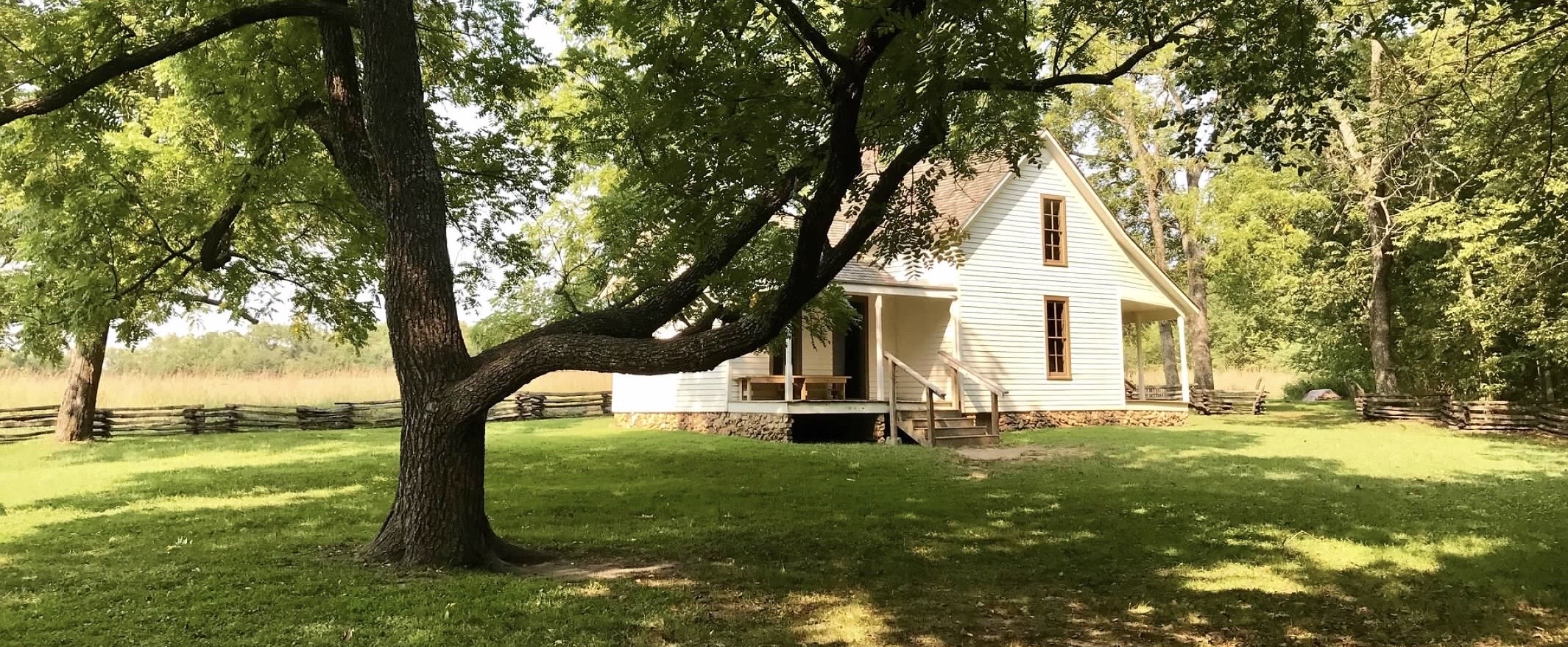
George Washington Carver National Monument was established in 1943 to celebrate the life of George Washington Carver. The monument preserves Carver’s boyhood home in Diamond, Missouri. We enjoyed visiting this national monument and learning about Carver’s amazing life.
Who was George Washington Carver?
George was born into slavery on Moses and Susan Carver’s farm in Diamond, Missouri in the early 1860s. His father died before he was born. After raiders from Arkansas kidnapped Carver’s mother and sister, Moses and Susan Carver raised George and his brother, James. Susan Carver taught George the basics of reading and writing. He went to school ten miles away in Neosho. Carver eventually made his way to Minneapolis, Kansas where he earned his high school diploma.

When Highland University denied George’s enrollment because of his race, he homesteaded a claim in Ness County, Kansas. In 1888, he took out a student loan for $300 and moved to Indianola, Iowa to study art and piano at Simpson College. One of the instructors there recognized his talents for planting flowers and encouraged him to apply to Iowa State University’s botany program. George was the first African American to attend Iowa State. After earning two masters degrees, he became the first African American on the faculty of Iowa State. Booker T. Washington hired George to head the Agriculture Department at Tuskegee Institute in 1896.

George was one of the first African Americans to gain widespread recognition for his achievements in agriculture and science. He advocated for soil preservation and encouraged farmers to rotate crops or cultivate new crops. He also developed over 145 products that could be made from peanuts. George was so influential during his life that he met three U.S. Presidents: Theodore Roosevelt, Calvin Coolidge, and Franklin Roosevelt. He made such an impact on Henry Ford, that when George began having trouble making it up the stairs in his Tuskegee dormitory, Ford paid for the installation of an elevator. The prince of Sweden even studied with him for three weeks. Carver passed away in 1943, and was buried next to Booker T. Washington at Tuskegee.
Visiting the national monument
The visitors center houses a small museum that tells the story of Carver’s life. It also features classrooms where students can learn about the agricultural processes that Carver pioneered. During our visit, the visitors center was hosting an exhibit of quilts that celebrate the National Park Service.



The Carver Trail leaves the visitors center and meanders around the monument. The trail is dog friendly, and Liberty was excited to explorer the monument with us!

The trail passes George’s birthplace. The site is marked by boards showing the approximate dimensions of the cabin where George was born. The trail continues to Carver Spring, then to the Boy Carver Statute. The statue was created by artist Robert Amendola in 1961 and depicts Carver as a young man contemplating nature.

Next, the trail circles Williams Pond before reaching the Moses Carver Home, which was built in 1881. The final stop on the Carver Trail is the Carver Family Cemetery.

Many of the plants along the trail were among those studied by Carver either in his youth or during his career at Iowa State and Tuskegee. We especially liked reading the quotes from George Washington Carver that are inscribed on granite slabs along the trail.




Click here for more Land of Liberty Explorers!
Like this page? Be sure to pin it!





